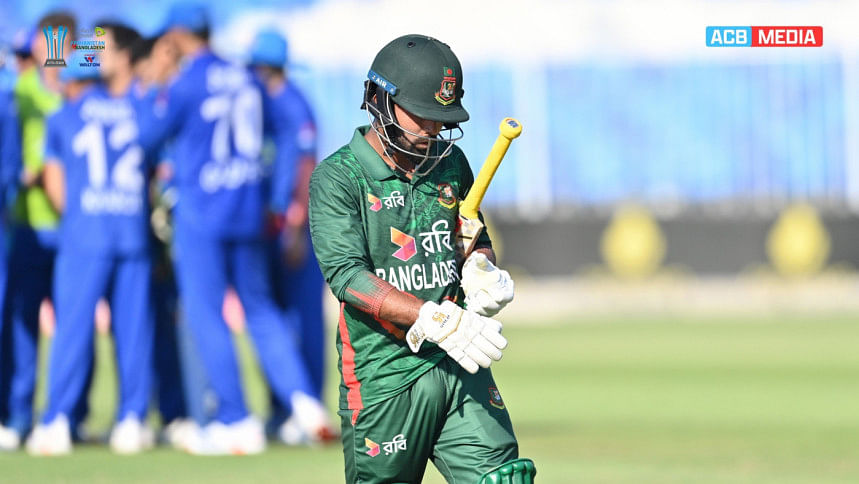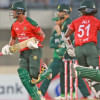Bangladesh’s batting evolution stuck in limbo

Bangladesh were mulling a change of approach in white-ball batting before the 2023 ODI World Cup. However, the very topic now appears so outdated that it begs the question of whether any lasting progress has actually been made.
Against South Africa in March 2022, when Shakib Al Hasan started his hitting early -- just after the 30-over mark -- he successfully disrupted the Proteas' tactic of saving Kagiso Rabada's overs for the death. Usually, Bangladesh build until the 40th over and, depending on wickets in hand, go for late blows, but Shakib was going against the grain of what is considered the norm for the Tigers, who snatched the ODI series 2-1.
Bangladesh's batting was once again in the limelight due to the approach taken by the whole unit in the just-concluded series against Afghanistan. The Tigers were missing a few key players in one match or another during the three-match ODI series, but overall it provided a chance to refresh the approach.
Soumya Sarkar and Tanzid Hasan Tamim became the latest opening batters, the 14th different opening pair within a period of two years. Soumya showed promise in getting runs, but, just like the opening pair -- which perhaps changed to accommodate Liton Das' injury -- there has been no continuity of ideas in terms of approach.
The openers started the third ODI on the front foot, both looking in form, but once they departed, the innings quickly lost momentum. Neither Zakir Hasan nor Towhid Hridoy appeared to play to their potential.
Bangladesh appeared a few runs short despite Mahmudullah Riyad and Mehedi Hasan Miraz's heroics, simply because team management had believed the wicket would behave differently, favouring the bowlers under lights. When that did not happen, the result became a forgone conclusion as there were simply not enough runs to make Afghanistan take more risks.
The three ODIs in Sharjah almost appeared to be from a different era, not what is usually the norm in ODIs played today. There were no 300-plus scores from teams batting first. Generally, that favours the Tigers, especially as seen over the years when they played in Mirpur, where 240 has been a challenging score.
Before last year's ODI World Cup in India, where venues in Mumbai, Hyderabad, and others had scores over 360, there was talk about a more attacking approach under Chandika Hathurusingha. Mushfiqur Rahim had been demoted to number six, Hridoy had been promoted, and Shakib appeared to be setting a tone during that South Africa series. There was talk of focusing on acceleration in the middle overs.
Yet, when push came to shove, without some of their more recognised profiles in Mushfiqur or Shakib present, and also without skipper Najmul Hossain Shanto in the third ODI, their approach reverted back to familiar territory -- targeting 250 scores. Meanwhile, no players have seized opportunities when regular batters in the ODI setup have been absent.
In terms of continuity, they have not carried forward the gusto from 2023 with which they wanted to take on an attacking approach. Also, despite much talk of improving practice and match wickets to boost batters' confidence, little has changed under the new board president. If this approach is to change, it starts with getting into the flow of how modern white-ball cricket is played. However, the Tigers still look well off the mark.

 For all latest news, follow The Daily Star's Google News channel.
For all latest news, follow The Daily Star's Google News channel. 








Comments